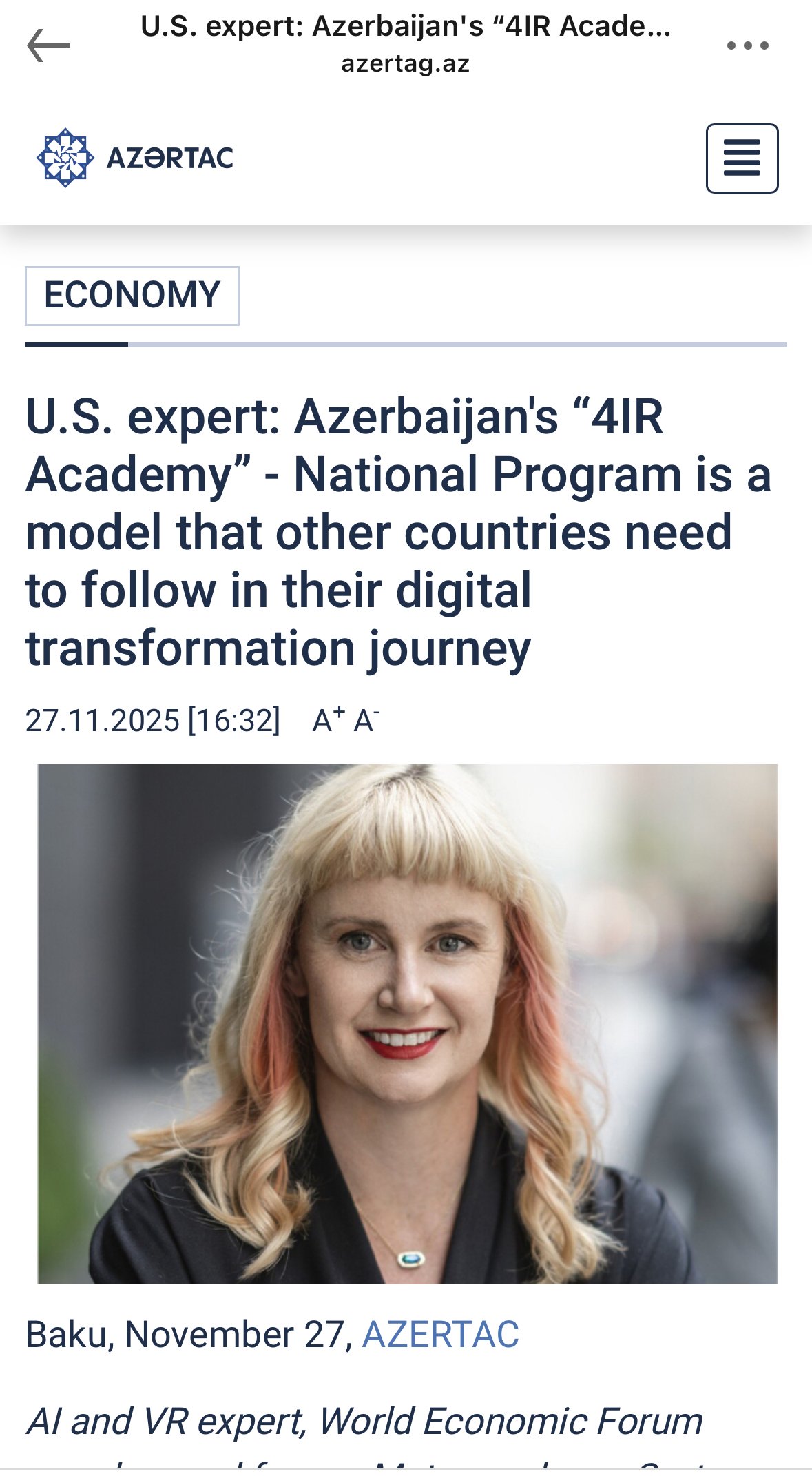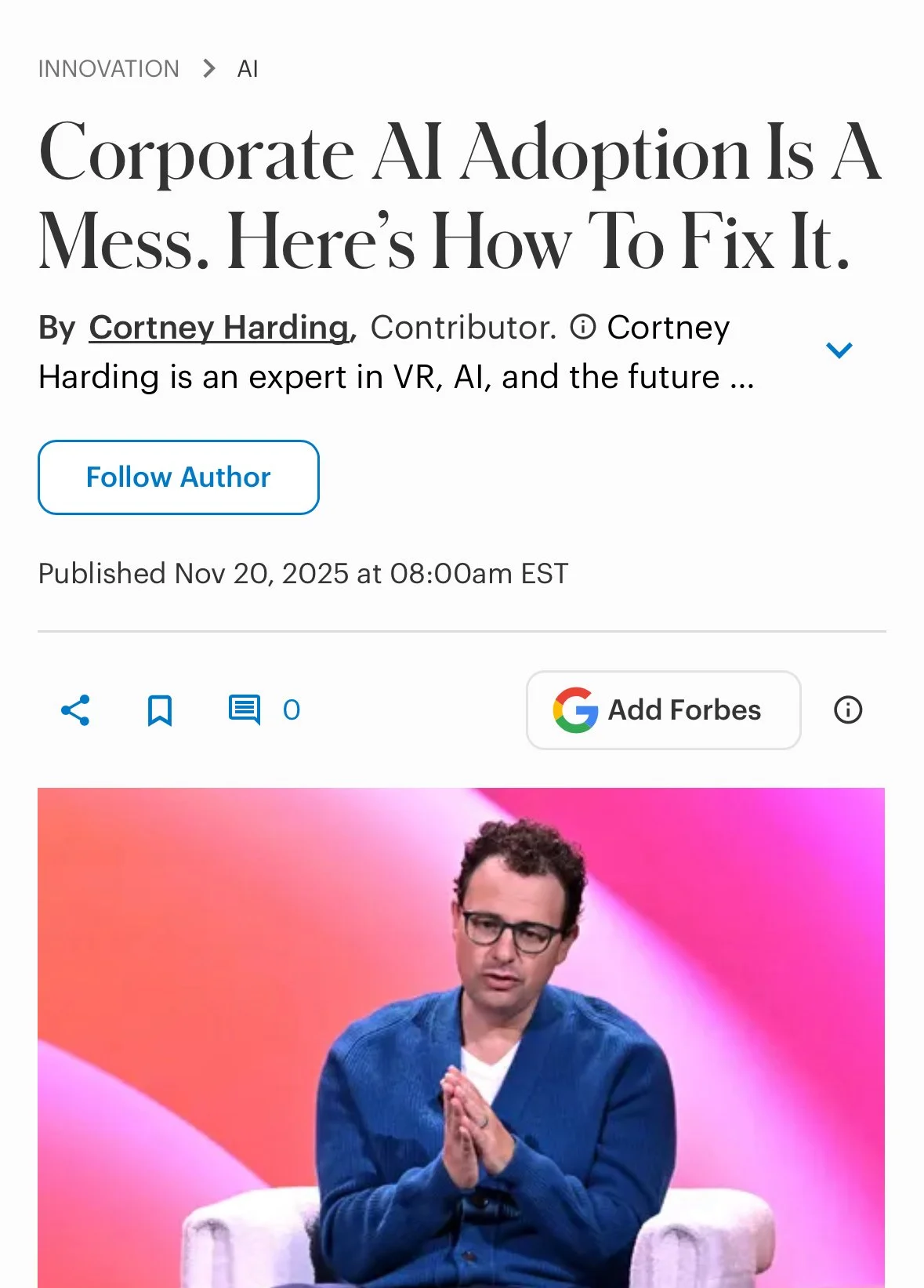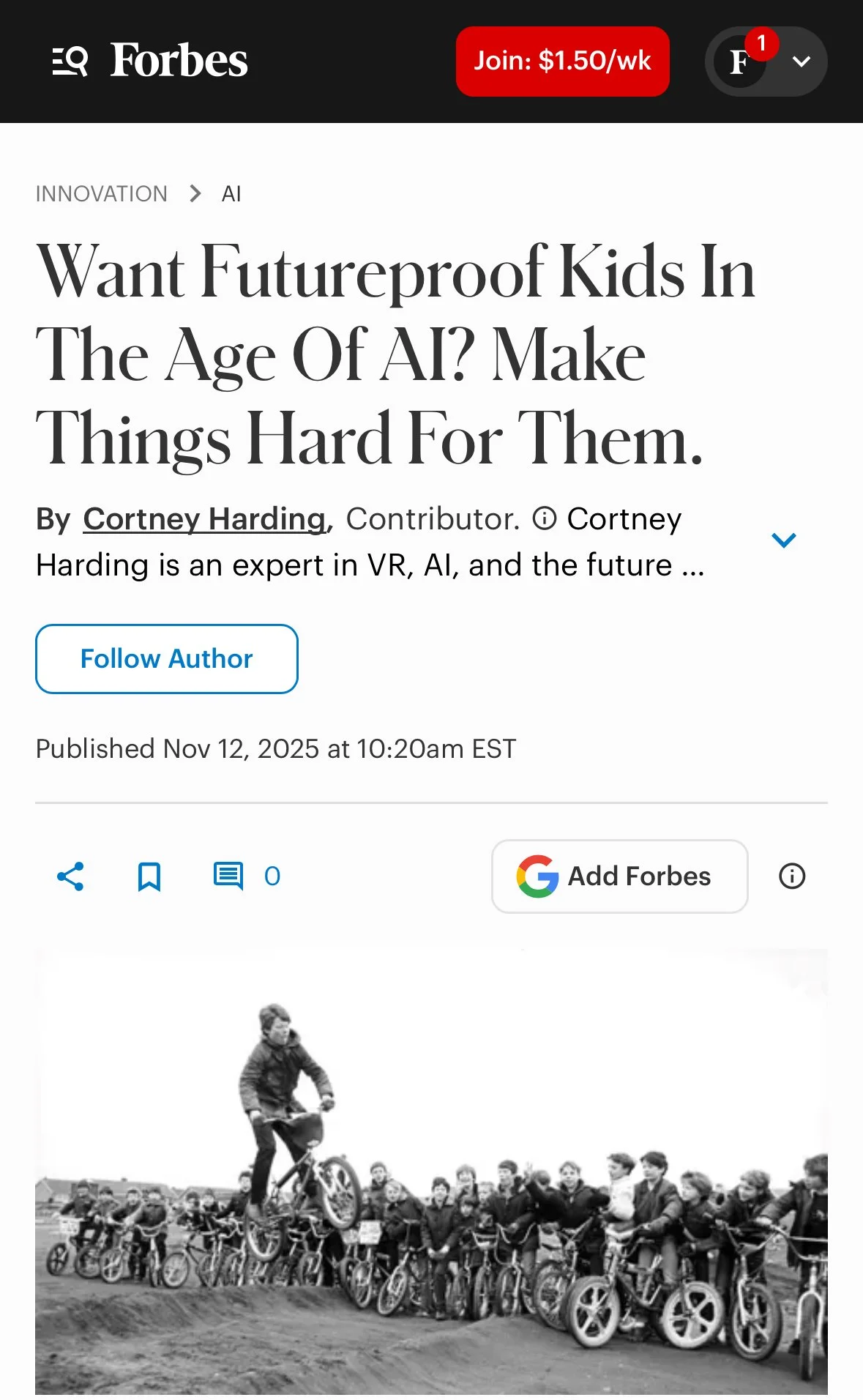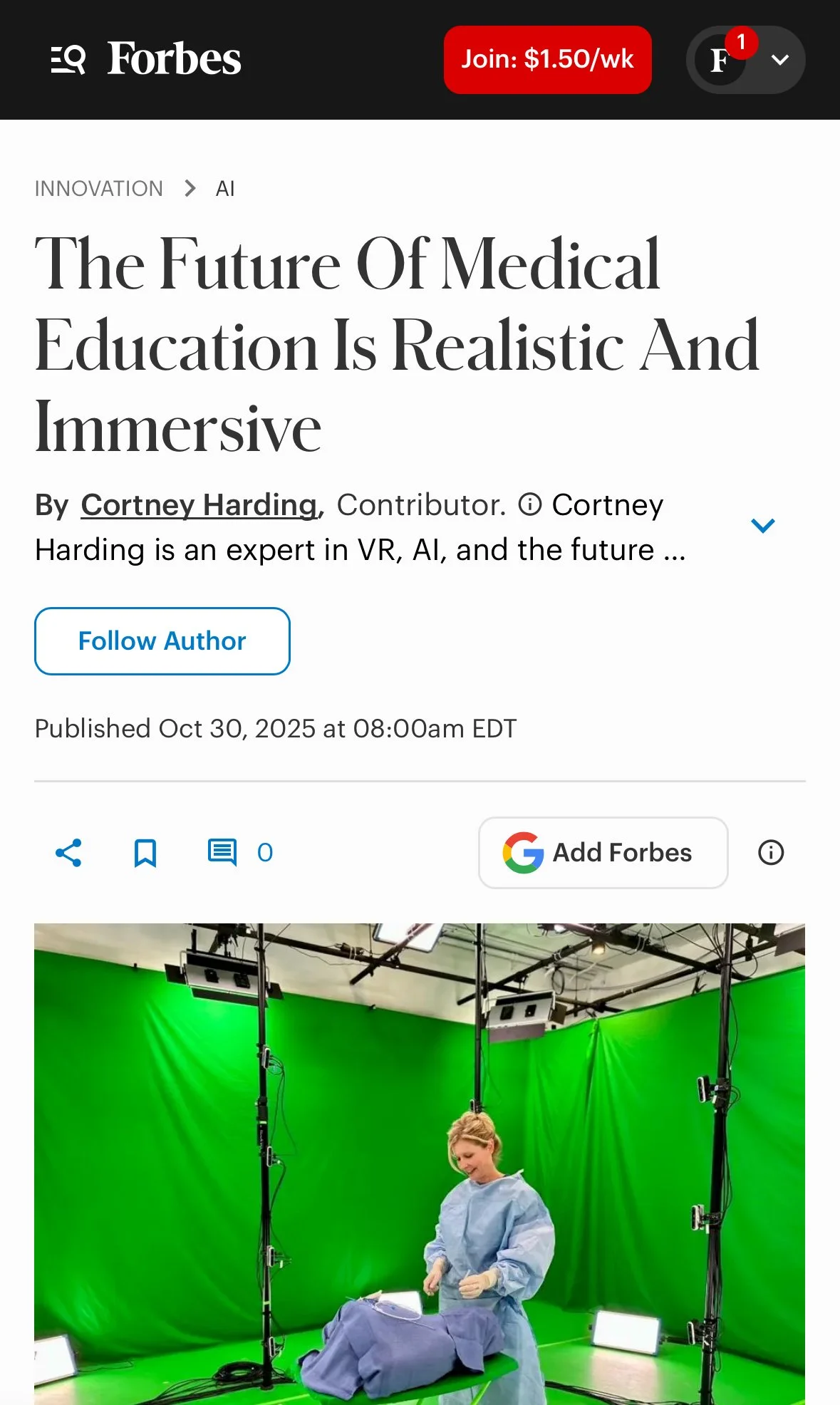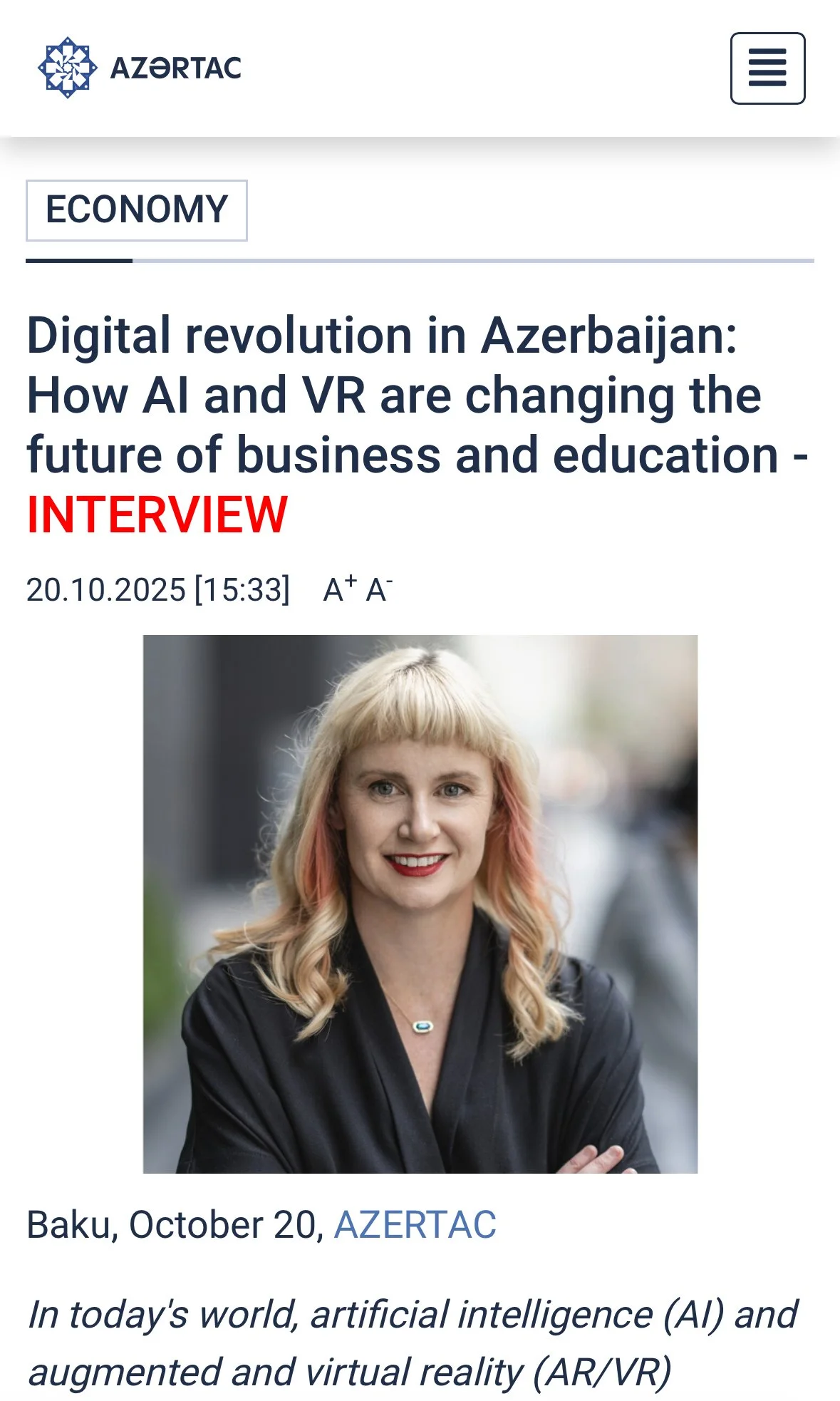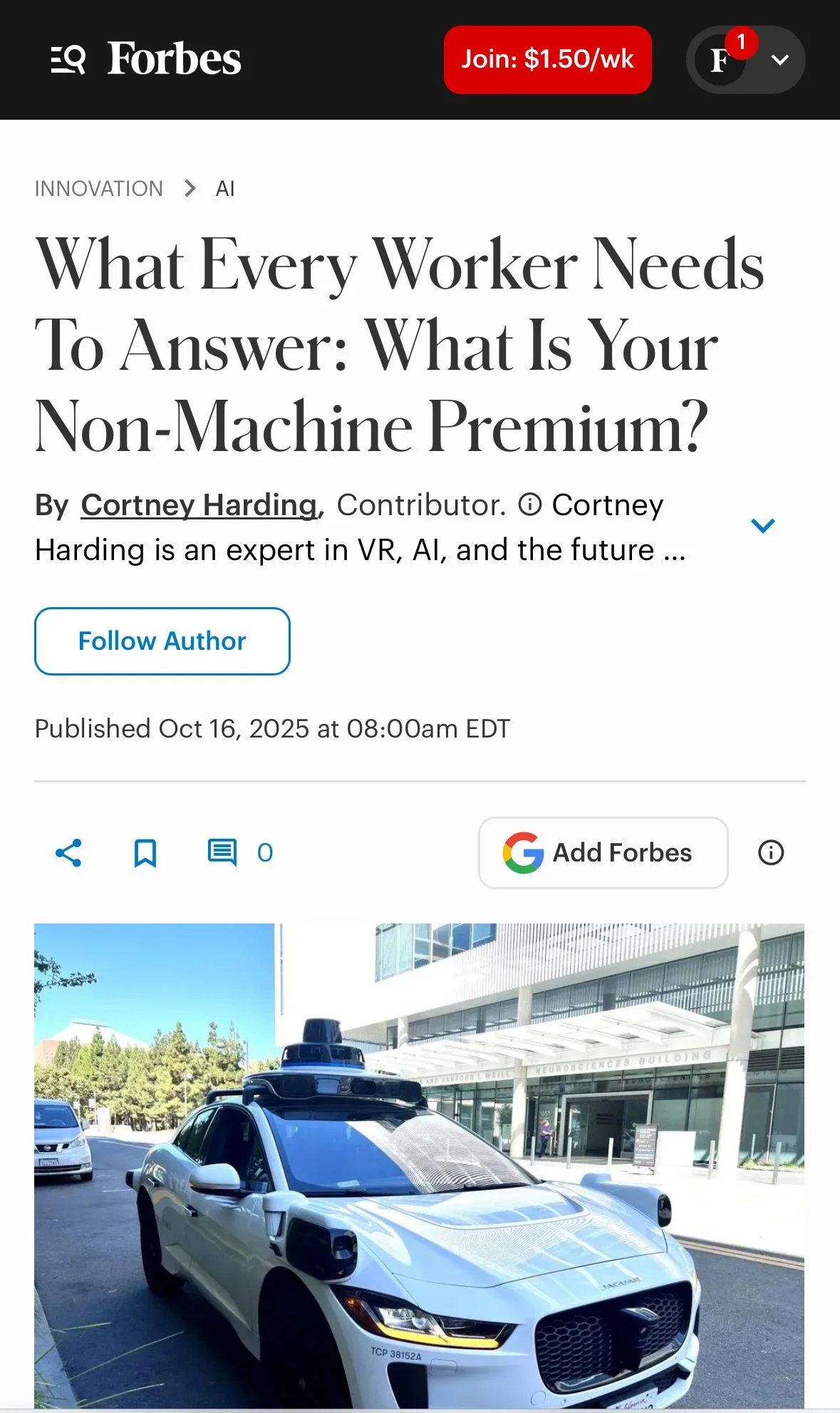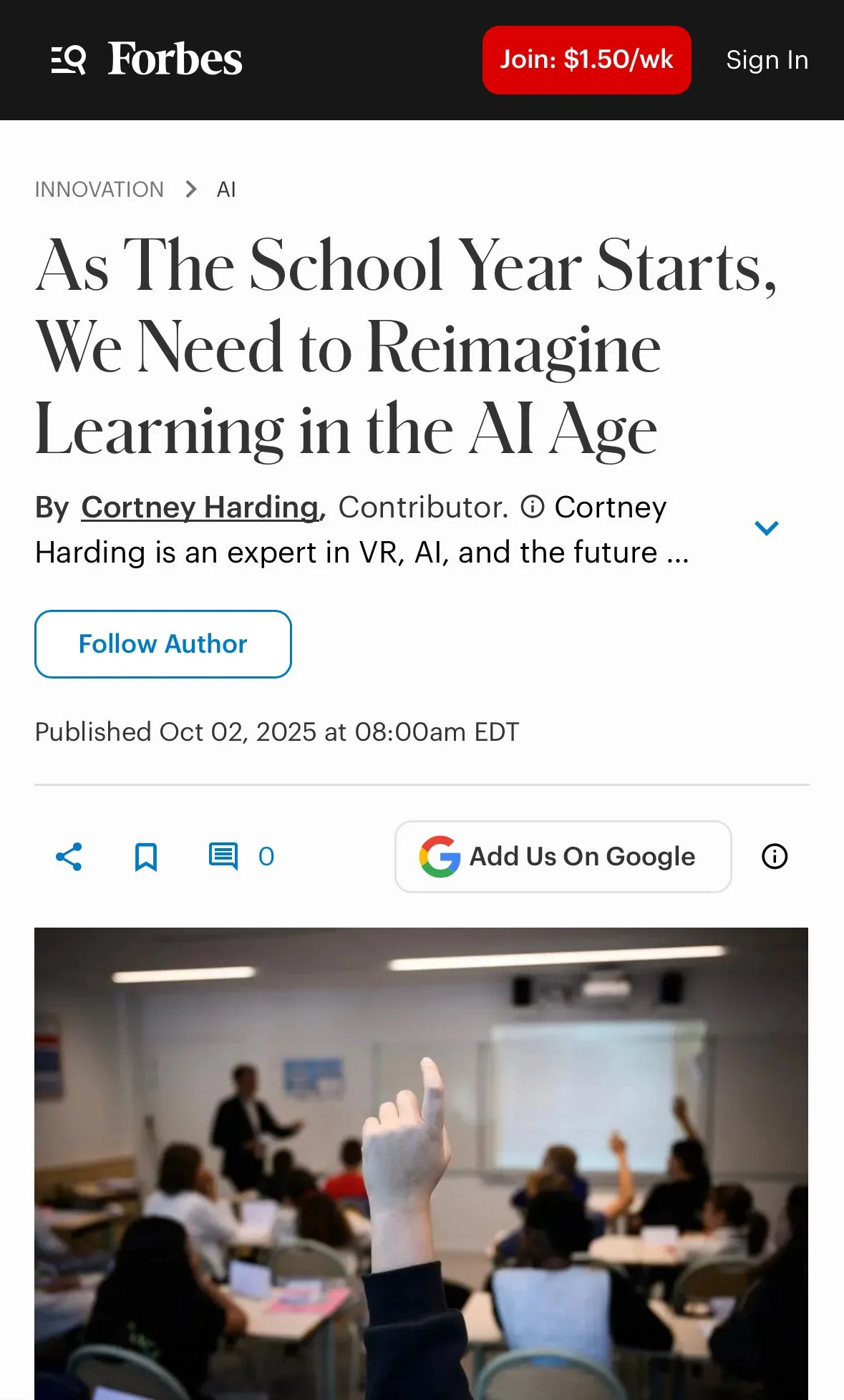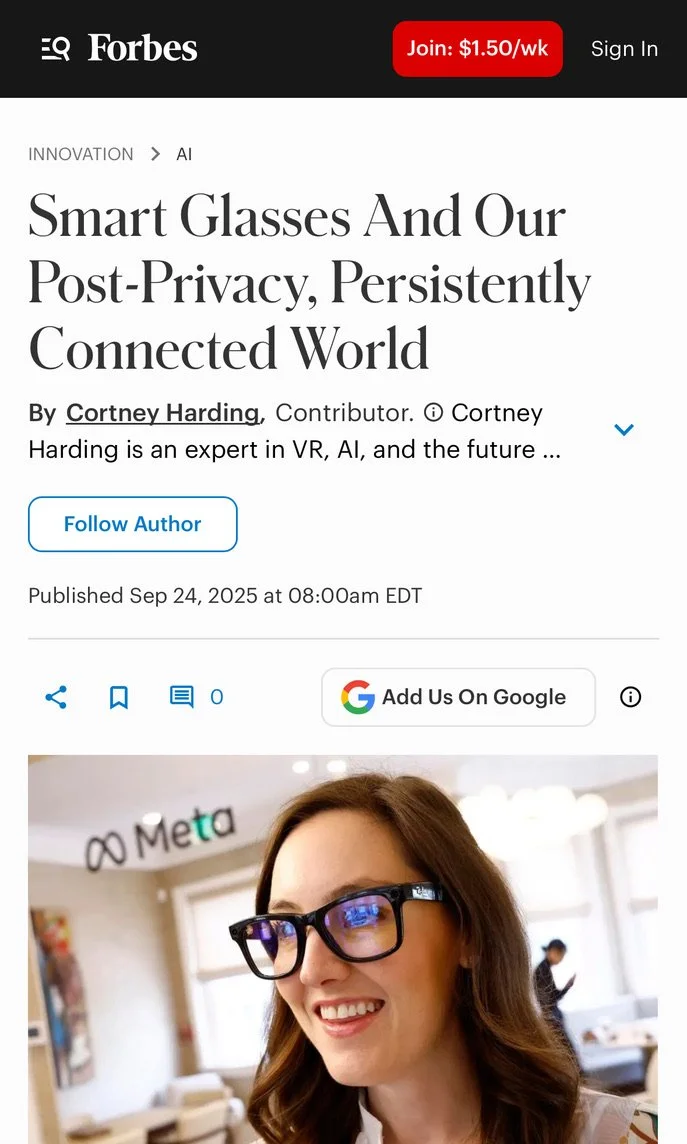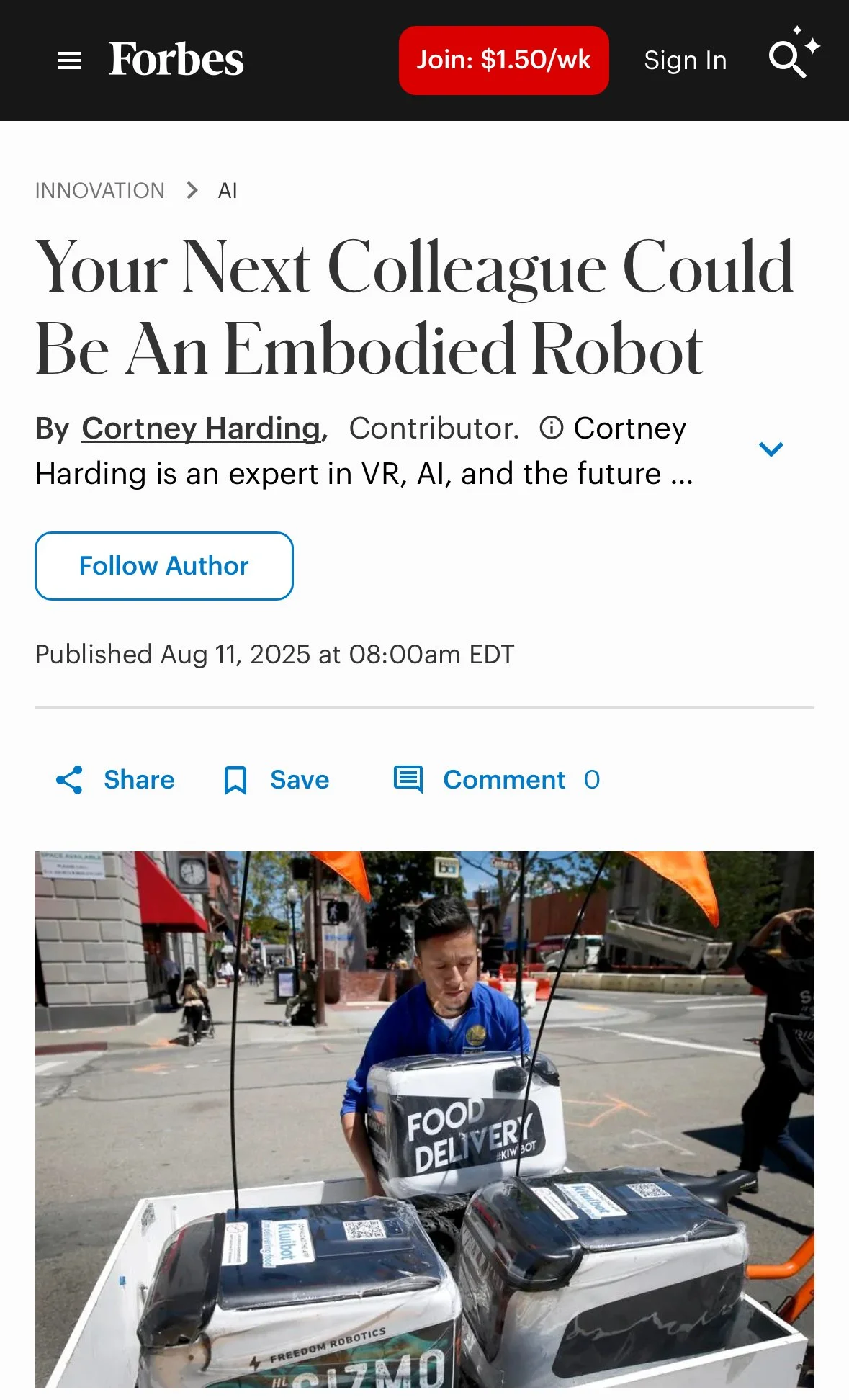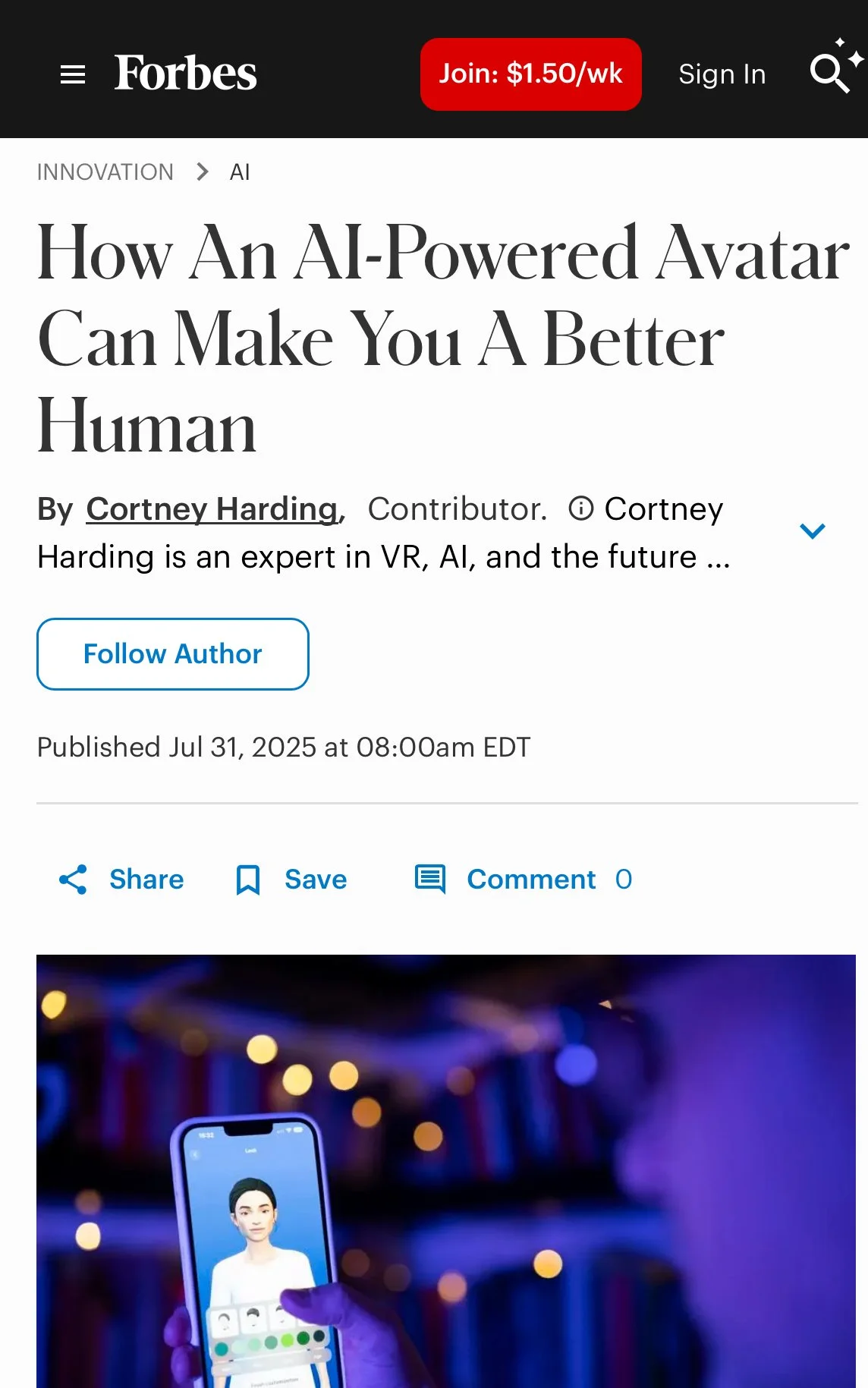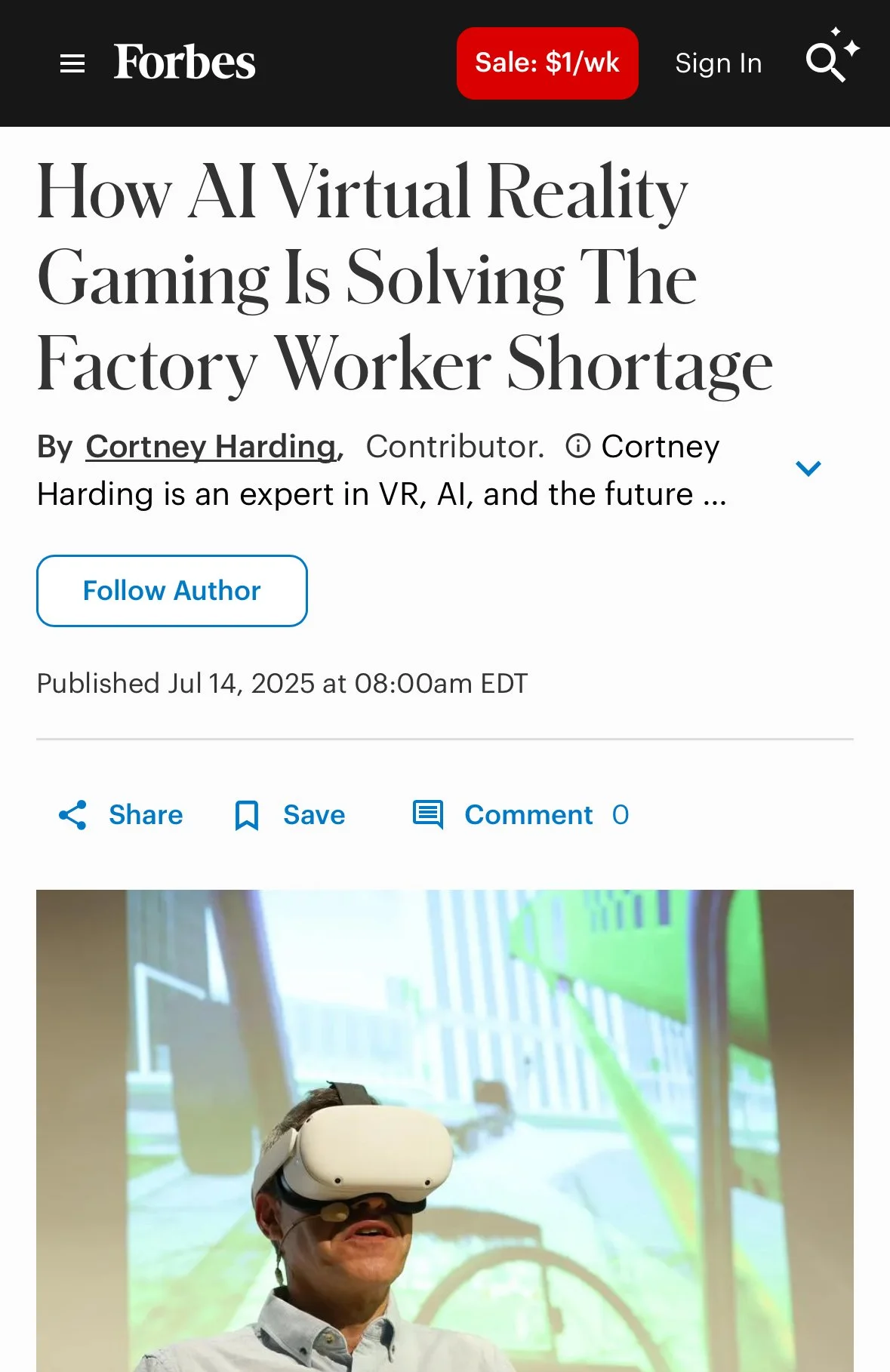Corporate AI Adoption is a Mess -- Here's How to Fix It
Why Kids Need to Be Bored in the Age of AI
Check out a sneak peek of Cortney's talk at the Fast Future Executive Summit last month!
The Future of Medical Training is Realistic and Immersive
Check out Cortney's conversation with Azertac!
New in Forbes: How to Set Yourself Apart in the Future of Work
The Spatial Race is Out Now!
New in Forbes: How To Rethink Education in the Age of AI
New in Forbes: Are We Ready for a Post-Privacy Future?
Come See Cortney in Baku Next Week!
New in Forbes: AI, VR, and the Gen X Stare
The AI Powered Future of Advertising
The Tech Growth Continuum, or Nothing Every Really Fails
New from Cortney in Forbes: The AI bubble might not be all bad
Read it here
Check out Cortney's latest Forbes column on VR and robots
What Comes After AI?
“Computers aren’t the thing. They’re the thing that gets us to the thing.”
For those of you who have watched the brilliant AMC series Halt and Catch Fire, let's do a thought experiment (if you haven't watched it, stop whatever you are doing and fire up AMC Plus, then come back a changed person). What would the characters be doing during the great AI explosion of the last few years? Joe would be in full Sam Altman mode, hopping on podcasts and keynote stages and selling everyone on the coming revolution. Donna would be focused on building out more practical applications that didn't have as much flash but ultimately made more impact. And Cameron would be taking Zuck's nine figure offer and gleefully committing corporate sabotage.
But what all of them would understand is this -- whatever they're building right now is just a means to an end, not the end. Computers were a novelty when they first came out, and now they're just another device we manage. Ditto smartphones. The internet is now just baked into our daily lives and the vast majority of the way we interact with it is passive, not active. It runs almost every aspect of our lives, whether we want it to or not.
And AI is going to get there as well. I always laugh when people tell me they refuse to use AI, because unless you go fully off the grid, it's baked in to so much of what we do. You might choose not to open ChatGPT and type in a prompt, and that's totally your right, but the technology is based into so many systems you use every day without you even knowing it.
So the question then becomes -- what is AI for? How are we using it to solve real problems and make lives better, not just have a shiny object that results in massive fundraising rounds? What is the thing that AI is leading us towards?
Because eventually AI is just going to run in the background. It won't be glamorous or sexy or the thing that inspires kids to flood San Francisco -- it will just be there, something we expect to work. It will solve problems before we even know they exist.
For instance, I get a ton of spam calls and texts, and no one seems to know how to stop them. This seems like something AI could do pretty easily, and hopefully in five years, it'll just stop these texts and calls before they even reach my phone. Ditto medical billing errors, credit card fraud, etc. The systems will just fix everything before it even reaches me. It will automatically rebook me on a flight if there is a delay and assign me a hotel room if needed. No more waiting in line. It will scan my prescription, find it at a store, and deliver it to me if desired -- no calling around, no haggling with an insurance company.
The thing that AI will get us to, hopefully, is a world where we waste less time. It's not about displacing workers -- it's about making jobs better and easier, so we can focus on the human things we're actually good at. In ten years, the only people who can say they're not using AI are those living fully off the grid, and that's exactly what we should be working towards.
New from Cortney in Forbes: How AI Can Make Us More Human
Read it here
AI Won't Replace Emotional Work -- But It Can Help Make You Better At It
The World Economic Forum jobs report is out and there is a lot of food for thought wrapped up in these numbers. As always, there's a level of guessing involved in making these predictions, but as someone who has contributed to many WEF reports, the guessers are usually pretty expert. Not shockingly, it found that the most "on rails" work (dealing with numbers and data) was going to be done by AI, while the least "on rails" work (dealing with human emotions and relationships) will still be done by humans, because most humans are definitely off the rails. And like Cathy Hackl found in her work around AI relationships, a GPT partner is great in that they are always on and never mean, but they can't cuddle you on the sofa either.
So the shift we're going to see is a move towards valuing human skills like listening, empathy, and creativity. And transparently, those are skills many people struggle with. They're certainly not taught to many people in any organized way -- while students have to prove they have reading, writing and math skills to advance in school (theoretically, anyway), there is not really coursework on active listening and managing others. And these will be the currency of the future, so we need to start thinking about how we upskill everyone now.
Paradoxically, AI can part of the solution. For the last few years I've been working on projects where learners use AI-powered human avatars to practice communication, and the results have been astonishing. The best part is that these simulations can be created with simple prompts and built and shared at scale. Human trainers are great, but they have time and location constraints, not to mention an inability to create very specific and difficult scenarios. One person I was working with last year was having a hard time managing someone on his team whose English proficiency was limited, was living in her car because of an eviction, and raising two kids solo. That's a hard headspace for a trainer to embody, but an AI-powered avatar was able to ingest all that and come up with something pretty realistic. The manager was able to practice that hard conversation several times, so when it came to the real chat he was comfortable and prepared and could offer empathy and real solutions.
This isn't just for work. I know people using AI to practice talking to partners and friends and parents about hard topics, and it generally works out for the best. You should absolutely NOT break up with your boyfriend using a ChatGPT generated text, but you absolutely should do some role plays and ask for feedback before you sit down to talk it out in person.
AI has limitless potential, and is going to change the way we live and work. If we can harness it for good and use it to make each other kinder, that's a net win.
Cortney's first Forbes column is now live!
Read more here
